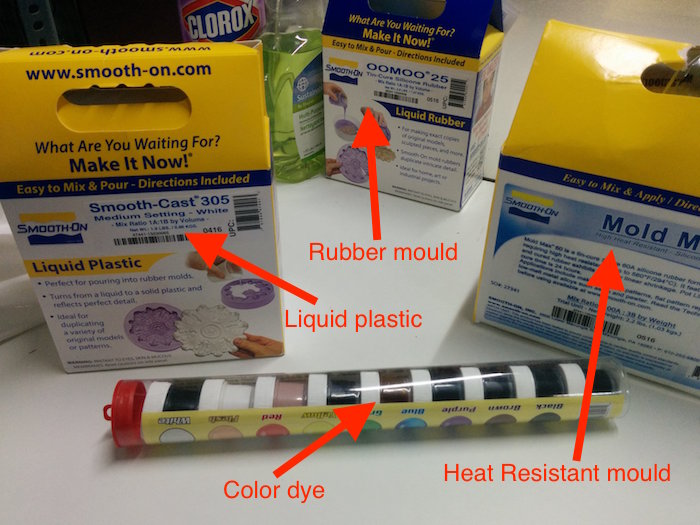
Moulding and Casting
Here, I am using the prepared wax block from the Modella as the mould for our product. We will be preparing two moulds for getting our final product in two materials:
For making products which are rigid in character (example plastic), the mould should be flexible and for making products which are soft in nature, the mould should be made of a hard material.

The wax mould that we are using:

Making a Plastic product
To make our plastic product, we use the liquid rubber OOMOO 25. Here, the solutions are mixed in a plastic container in the ratio specified on the box and then poured over the wax mould and allowed to set for 24 hours. On removing the mould we get a rubbery material that will serve as the mould for our plastic product.
Next, we use the Smooth Cast-305 Liquid Plastic to make our product. Here the solutions are mixed in the correctly stated proportions in a plastic cup while adding a coloring dye and poured over the mould to set.
After setting we get our final plastic product as shown:

Making a Metal based product
In order to create our product in metal, we use an alloy of antimony called Babbit which has low melting temperatures of around 550 Degree Fahrenheit. The metal is melted and poured over the mould that is prepared. To cast on metal, we need a mould that is heat resistant and for that we use the Mould Max high heat resistant silicone moulding material.
The solutions are mixed in the stated ratio in a plastic container and poured over the mould. The solution is allowed to set for 12 hours after which it is taken off or separated.

Next, the Babbit block is cut into tiny pieces using a band saw. This is done in order to be able to put the pieces inside the graphite furnace cups which go in the furnace.
The furnace is then loaded with the Graphite cup containing the metal blocks and heated to 550 Degrees. Always keep a bucket of water near the furnace as a precaution.

Meanwhile, powder the inside of the heat resistant mould using talcum powder to avoid sticking of the metal to the mould.

The furnace heats slowly and you can see the temperature rising gradually. Once it reaches 550 Degrees, wait for a couple of minutes before taking out the cup.
Use heat resistant gloves and tongs to take the graphite cup from the furnace and place it on a stone block/ ceramic tile. Pour the molten metal on to the mould slowly until it reaches the brim. Wait for 10 minutes for the metal to cool down, after which you can separate the product and put it in water to further cool it down.

The final product:
